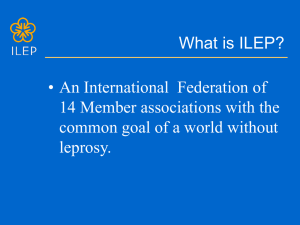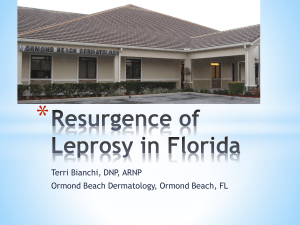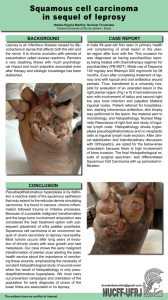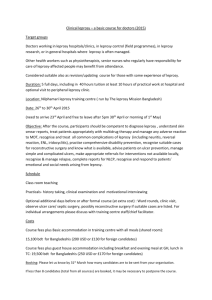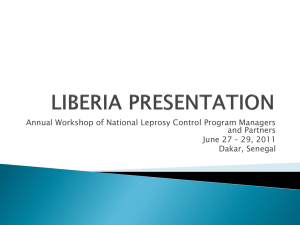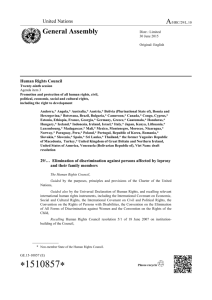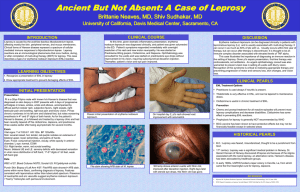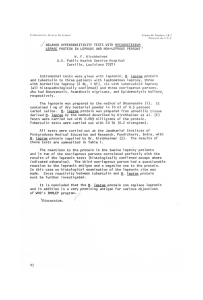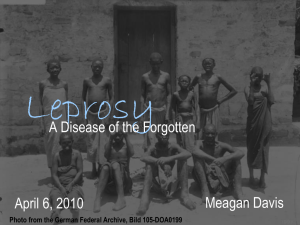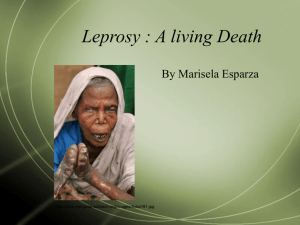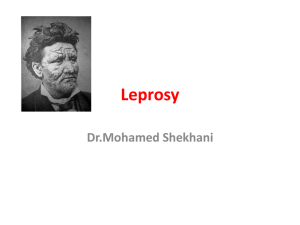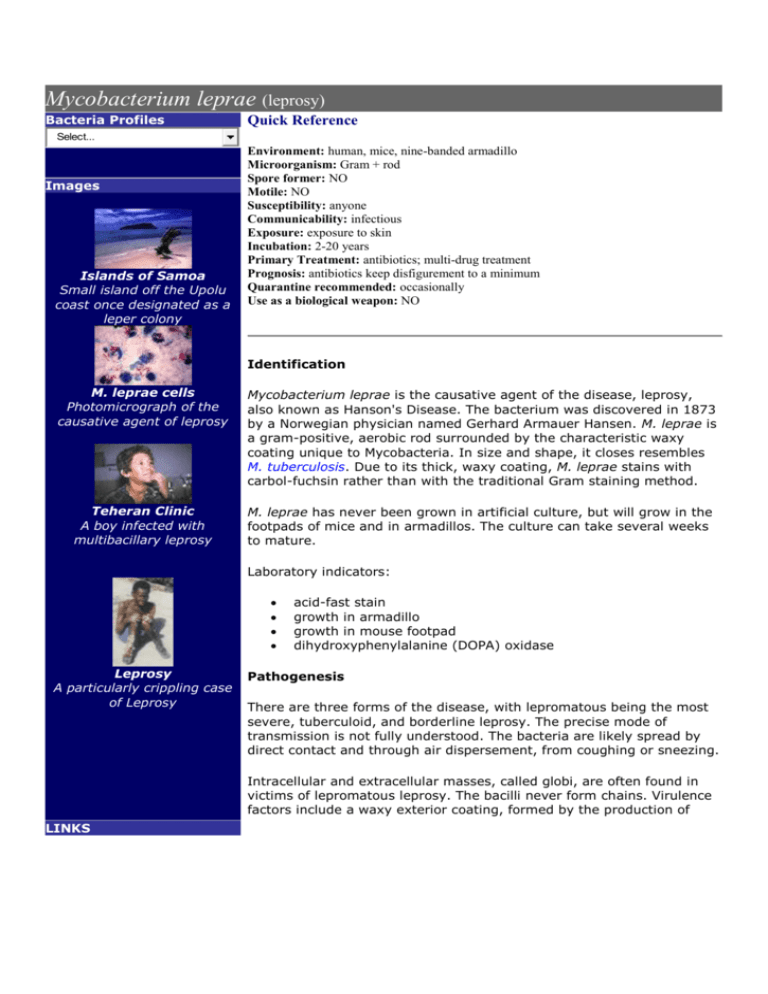
Mycobacterium leprae (leprosy)
Bacteria Profiles
Quick Reference
Select...
Images
Islands of Samoa
Small island off the Upolu
coast once designated as a
leper colony
Environment: human, mice, nine-banded armadillo
Microorganism: Gram + rod
Spore former: NO
Motile: NO
Susceptibility: anyone
Communicability: infectious
Exposure: exposure to skin
Incubation: 2-20 years
Primary Treatment: antibiotics; multi-drug treatment
Prognosis: antibiotics keep disfigurement to a minimum
Quarantine recommended: occasionally
Use as a biological weapon: NO
Identification
M. leprae cells
Photomicrograph of the
causative agent of leprosy
Mycobacterium leprae is the causative agent of the disease, leprosy,
also known as Hanson's Disease. The bacterium was discovered in 1873
by a Norwegian physician named Gerhard Armauer Hansen. M. leprae is
a gram-positive, aerobic rod surrounded by the characteristic waxy
coating unique to Mycobacteria. In size and shape, it closes resembles
M. tuberculosis. Due to its thick, waxy coating, M. leprae stains with
carbol-fuchsin rather than with the traditional Gram staining method.
Teheran Clinic
A boy infected with
multibacillary leprosy
M. leprae has never been grown in artificial culture, but will grow in the
footpads of mice and in armadillos. The culture can take several weeks
to mature.
Laboratory indicators:
Leprosy
A particularly crippling case
of Leprosy
acid-fast stain
growth in armadillo
growth in mouse footpad
dihydroxyphenylalanine (DOPA) oxidase
Pathogenesis
There are three forms of the disease, with lepromatous being the most
severe, tuberculoid, and borderline leprosy. The precise mode of
transmission is not fully understood. The bacteria are likely spread by
direct contact and through air dispersement, from coughing or sneezing.
Intracellular and extracellular masses, called globi, are often found in
victims of lepromatous leprosy. The bacilli never form chains. Virulence
factors include a waxy exterior coating, formed by the production of
LINKS
mycolic acid unique to Mycobacteria.
World Health Organisation
Leprosy Fund
The incubation period can be long, perhaps as much as 20 years, in
unusual cases, or as little as two.
TB and Leprosy Control
Manifestations
Infected individuals will notice skin lesions in early stages, leader to
paralysis or loss of sensation in those areas, and eventually loss of
extremities. Blindness can occur as the disease advances.
Treatment
Though the bacterium was discovered in 1873, a treatment was
available until the 1940s. Dapsone (diamino diphenyl sulfone) has been
successfully used for over fifty years to treat leprosy, but recently, the
bacilli are becoming more resistant to treatment. Multidrug therapy
(MDT), usually consisting of Rifampicin, Clofazamine, and Dapsone, is
use to treat all cases of leprosy to diminish the development of
resistance genes. In patients receiving MDT, a high proportion of bacilli
are dead within days, suggesting that many symptoms of leprosy must
be due in part to dead cells. Thus, development of a drug to rid the body
of dead organisms is essential. Administration of Dapsone or any other
drug as monotherapy should be considered unethical.
Prevention
Though rare in the United States, the disease is still a problem in parts
of Texas and Louisiana possibly due to the presence of the nine-banded
armadillo. In 1997, there were approximately 1.2 million cases
worldwide, with Africa and Asia reporting the highest numbers.
Additionally, about 600,000 new cases are reported annually. Despite
famous historical precautions, the disease is not highly contagious.
Crippling effects still occur, but the availability of MDT in recent years
has lessened the worst symptoms of leprosy. As previously mentioned,
the disease is not as contagious as historical confinement of lepers
would have people believe. Leprosy can be avoided by covering the face
and hands when in the presence of infected individuals. Modern
antibiotics and new treatment regimens are helping to keep the number
of severely disfigured individuals to a minimum.
Copyright © 2002. All rights reserved.
For questions, comments, or corrections,
Historique.net | Infectious Disease
email: webmaster@historique.net
Revised: 08.02.2003


